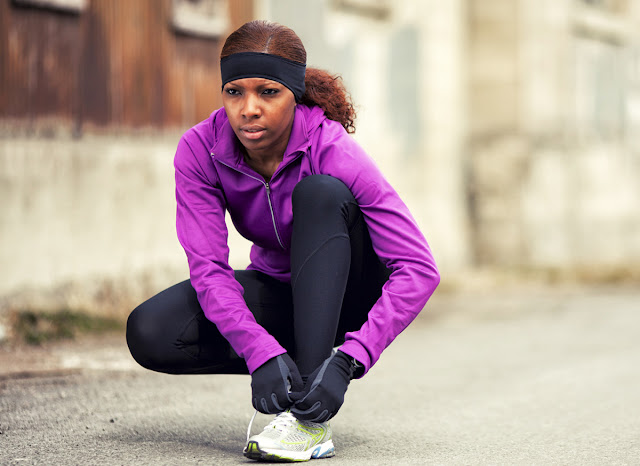Tweet
By Sonia Rappaport, Physical Therapist and Rehabilitation Instructor, The Visiting Nurse Service of New York (VNSNY) Partners in Care
The cold weather is back! Between plunging temperatures and limited sunlight, it’s no wonder some of the most devoted of exercisers hang up their fitness gear and stay inside – whether it’s to hit the couch or the elliptical.
It should come as a surprise to no one that exercise boosts metabolism and mood. But did you know that exercising outdoors, particularly in the winter, can increase those benefits? Believe it.
According to a study published by the National Center for Biotechnology Information, exercising in the cold weather increased participants’ metabolism and their muscles’ capacity to use oxygen – not bad! Meanwhile, a 2017 study found that climbing outdoors, compared to both exercising indoors on a treadmill and to remaining sedentary, vastly improved feelings of enjoyment and reduced fatigue, supporting the notion that exercise is a viable stress recovery solution, and “green” outdoor exercise even more so.
This is especially good news for people in today’s “sandwich generation,” whose busy lives may include caring for older parents and also for their own children. While your 70-year-old mom might not be a candidate for competitive rock climbing, she just might want to join you for a walk in the park, giving you both an enjoyable fitness boost and some time just to catch up.
As a Physical Therapist and Rehabilitation Instructor working with the not-for-profit Visiting Nurse Service of New York and its affiliate Partners in Care, I work with people of all ages and fitness capabilities, from 25-year-olds to 95-year-olds—from those recovering from surgery to homebound seniors with limited mobility. To help make winter exercise safe and enjoyable for all, I’ve put together a few important tips and precautions that I share with patients who get “cabin fever” or are looking for safe ways to stay fit and get outside during the winter months!
Protect Your Heart
If you have a history of high blood pressure, high cholesterol, heart disease, diabetes or smoking, consult with your doctor before exercising in the cold, as these are all significant risk factors for a heart attack.
Start by exercising regularly indoors, and if you get the ‘OK’ from your doctor, feel free to venture outside. Start slowly and chart your course with a simple walk around your neighborhood or a stroll through the park. For added safety and enjoyment, ask a friend or neighbor to join you.
…And Your Skin, Feet, Hands and Ears
A little cold will bite if you don’t prepare for it. When it’s cold, blood flow concentrates in the body’s core, leaving your feet, hands and ears susceptible to frostbite. A thin pair of glove liners made of wicking material under a pair of heavier gloves or mittens, a headband to cover your ears and extra thick socks under your sneakers should do the trick to protect those areas.
Remember, your skin needs protection in the winter, too! Approximately 80 percent of UV rays still penetrate through the clouds, so the sun doesn’t have to be out for your skin to be in danger. Moisturizing before you leave the house or apartment will also help you avoid dried out and irritated skin that can result from strong winds.
Watch Out for Ice!
Here’s a three-word solution for slipping on ice and snow: take it slow. The most frequent winter injuries are slips and falls, but they can absolutely be avoided by a few careful steps, like wearing boots with soles that won’t skid, making sure all paths you walk on are well-lit and walking as flat-footed as possible in areas that may be icy.
Dress the Part
Bundling up like the abominable snowman or dressing down in anticipation of a sweat-a-thon are both rookie mistakes! It’s true that exercise generates a lot of heat – maybe enough to make you forget that it’s winter! The evaporation of sweat pulls heat from your body, and as a result, can make you feel chilled. My solution is to dress in layers: A thin layer of synthetic material draws sweat away from your body and an extra layer of fleece adds insulation – and can be removed and put back on as needed.
Hydrate
Even though you can expect to sweat less than you might in the summer, dehydration is still a major risk factor. Seniors in particular are susceptible to fluid and electrolyte imbalances because of the body’s declining ability to conserve water with age. Be sure to drink water before, during and after exercising.
How Low Can You Go?
Older adults are also more susceptible to hypothermia, a medical emergency in which your body loses heat faster than it can produce it. People can lessen their chances of developing health complications resulting from hypothermia if they prepare and are made aware of the symptoms, which include cold hands and feet, fatigue, confusion, trouble walking, slow breathing and a low heart rate. It’s advisable to consult with a doctor or healthcare provider before embarking on any new kind of exercise, fitness or wellness routine – especially when that routine involves a winter wonderland!
Sonia Rapaport is a physical therapist and rehabilitation instructor with the Visiting Nurse Service of New York and its private pay affiliate Partners in Care. For more information please visit www.PartnersinCareNY.org or www.VNSNY.org, or call (212) 609-7700.

Comments
Post a Comment